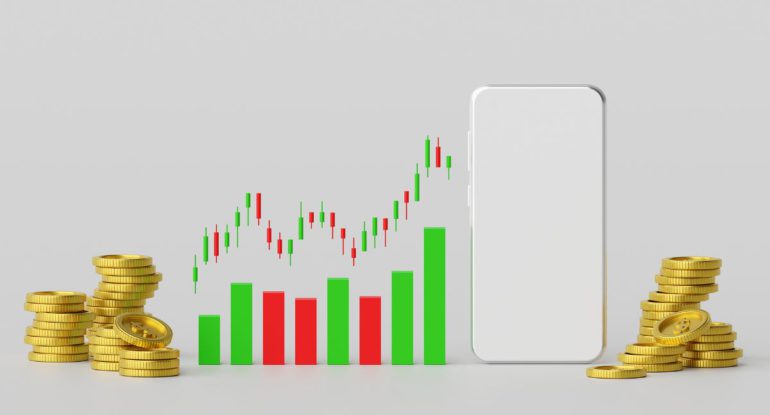Top 10 Crypto Trading Red And Green Flags You Should Know About

The world of cryptocurrency trading has continued to evolve since 2022. With new developments, challenges, and opportunities, it’s essential to stay informed and adapt to the changing landscape. In this article, we’ll explore key points to consider in crypto trading since 2022, providing you with valuable insights for navigating this dynamic market.
Valuable insights for navigating the crypto trading market

1. Regulatory Changes:
Regulation has been a significant theme in the crypto world. Governments worldwide have been exploring and implementing regulations on exchanges and trading. Some have embraced cryptocurrencies, while others have imposed stricter rules. Staying updated on the regulatory environment in your region is crucial for compliance and risk management.
2. Market Volatility Persists:
The crypto market’s inherent volatility remains. Prices of cryptocurrencies can fluctuate dramatically in a short period. While this volatility can lead to substantial gains, it also poses the risk of significant losses. It’s vital to be prepared for both scenarios and implement risk management strategies.
3. Rise of DeFi and NFTs:
Decentralized Finance (DeFi) and Non-Fungible Tokens (NFTs) have gained immense popularity. DeFi protocols offer lending, borrowing, and yield farming opportunities, while NFTs have transformed digital ownership. Both sectors present unique trading opportunities but require careful consideration due to their complexity and risks.
4. Security Is Paramount:
Security has always been a priority in the crypto space, and it remains critical. To safeguard your assets, use reputable wallets and exchanges with strong security features. Enable two-factor authentication (2FA) and be vigilant against phishing attacks and scams.
5. Taxation Matters:
Cryptocurrency taxation laws differ from one country to another. Understanding your tax obligations is essential to avoid legal issues. Seek guidance from tax professionals if necessary to ensure compliance.
6. Continuous Learning:
The crypto industry is in a constant state of evolution. To make informed decisions, keep abreast of news, developments, and emerging technologies. Education is key to understanding this rapidly changing space.
7. Watch for Scams and Risks:
The prevalence of scams and fraudulent schemes is a persistent issue. Recognizing red flags and exercising due diligence before investing or trading is imperative. If something seems too good to be true, it probably is.
8. Diversify Your Portfolio:
Diversification is a time-tested risk management strategy. Instead of putting all your funds into a single cryptocurrency, consider spreading your investments across different assets. This can help mitigate potential losses.
9. Consider a Long-Term Approach:
While day trading is an option, think about long-term investment strategies. Many investors choose to “HODL” (hold) their assets over extended periods, betting on the potential for long-term growth.
10. Learn Technical Analysis:
Technical analysis can be a valuable tool for understanding market trends. A basic understanding of chart patterns, indicators, and trading strategies can assist in making informed trading decisions.
11. Engage with the Community:
Joining cryptocurrency forums, social media platforms, and discussion groups can provide you with valuable insights and information. Engaging with the crypto community can help you stay informed and make better trading decisions.
In conclusion, the world of cryptocurrency trading has continued to evolve since 2022. While it offers exciting opportunities, it also comes with risks and challenges. Staying informed, conducting thorough research, and exercising caution are essential practices in navigating this dynamic and ever-changing market. By keeping these considerations in mind, you can make more informed decisions and manage the risks associated with crypto trading.

If there is just one thing I’ve learned in my 9 years of trading:
Don’t touch a stock or crypto if the founder openly talks about its price movements
Any founder that conflates price with real traction is a walking red flag
— Psycho (@AltcoinPsycho) May 11, 2022

Also, read – Top 10 Ways AI And ChatGPT Can Help In Crypto Trading
Conclusion
In conclusion, the cryptocurrency trading landscape has seen significant developments since 2022. As the market continues to evolve, it’s essential to adapt to these changes and stay informed to make the most of the opportunities while managing the associated risks.
From regulatory shifts to persistent market volatility, these factors have a profound impact on the crypto trading environment. Embracing the rise of DeFi and NFTs can open up new horizons, but they require careful consideration due to their complexity.
Security remains paramount, and it’s crucial to prioritize the safety of your assets through robust security measures. Understanding your tax obligations and compliance with cryptocurrency regulations is vital to avoid legal complications.
Continuous learning and staying informed about the latest trends and technologies in the crypto space are necessary for making informed decisions. Recognizing and avoiding scams and fraudulent schemes is critical to protecting your investments.
Diversification and a long-term investment perspective can help you navigate the market’s inherent volatility. Learning technical analysis and engaging with the crypto community can provide you with valuable insights.
In this ever-evolving crypto trading landscape, combining knowledge, diligence, and caution will empower you to make informed decisions, seize opportunities, and manage the risks that come with the exciting world of cryptocurrency trading.
FAQs about Crypto trading
How do I start crypto trading?
To start trading cryptocurrencies, follow these steps:
- Choose a Platform: Select a cryptocurrency exchange or trading platform.
- Create an Account: Sign up, verify your identity, and link a payment method.
- Learn & Research: Understand the market, different cryptocurrencies, and trading strategies.
- Start Small: Begin with a small investment to get familiar with the market.
- Diversify & Manage Risks: Avoid investing all your funds into one asset and be mindful of the risks involved.
Is trading crypto a good idea?
The suitability of crypto trading varies. While it can be profitable, it’s also highly volatile and risky. Crypto markets can experience sudden fluctuations, so it’s essential to approach it with caution, thorough research, and a clear understanding of the risks involved.
Is crypto trading profitable?
Crypto trading can be profitable, but it’s highly unpredictable. Some traders make significant gains, while others may incur losses. Successful trading often involves a combination of research, strategy, and risk management. However, the high volatility of the market makes profits far from guaranteed.
Can I buy Bitcoin for 50 dollars?
Yes, you can buy a fraction of a Bitcoin for $50. Bitcoin is divisible, allowing users to purchase even small amounts of the cryptocurrency. Many platforms enable the purchase of fractions of Bitcoin, making it accessible to a wide range of investors.




























































